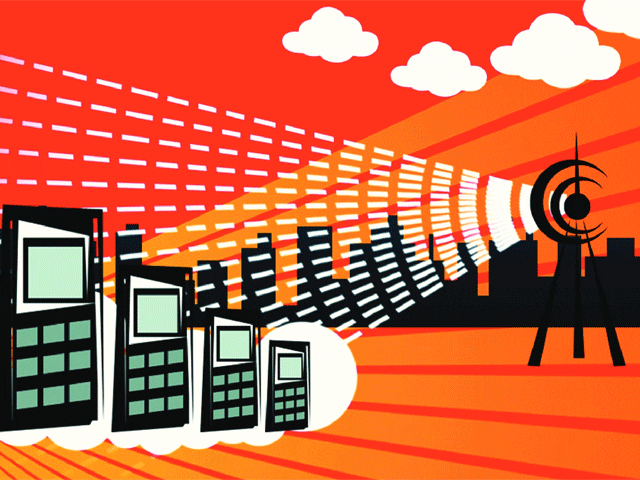The Covid-Hit Scorecard Of Africa’s Top 3 Phone Markets Is A Mixed Bag

The pandemic is known to have destabilised a host of things, from general lifestyle to work life, and now, even the mobile phone market in Africa.
In the previous week, the International Data Corporation (IDC) released its quarterly report for the third quarter (Q3) of 2020 on the mobile phone market in Africa.
The report targeted the statistics for the purchase and shipment of mobile phones in Africa. It showed Africa’s mobile market to have declined by 6 percent year-on-year (YoY) in terms of shipment in Q3.
This decline was attributed to the decline in the shipment of feature phones. A feature phone is a basic mobile phone with button-based input and a small display.
They are likened to the older generation phone types. This differs from a smartphone that has advanced functions like a bigger screen and can operate as a personal computer.
As stated in the report, the shipments of feature phones declined by 11.2 percent in Q3 2020. In contrast, smartphone shipments were up by 14.1 percent YoY.
Hence, this contributed to the total mobile phone shipment decline in Africa.
This result isn’t unexpected, as feature phones are gradually waning off in purchase, with the smartphone penetration in Africa is experiencing a surge at the time.
The IDC stated the growth in demand which the smartphone market experienced in Q3 to be caused by the spike in demand following the easing of lockdown restrictions in African countries.
A shift in vendor strategies was also noted to have played a part, as they were seen to offer more entry-level flagship models which aided customers’ purchase.
How the smartphone market of Africa’s three biggest economies fared
The top three African economies which also double as Africa’s largest smartphone markets were stated to record varying performances.
Two of the three countries, Nigeria and Egypt were disclosed to have recorded a YoY growth in Q3 2020, while South Africa in contrast recorded a decline.
IDC attributed smartphone shipments growth in Nigeria to a shift from vendors to entry-level and mid-range devices. A similar reason was stated for the growth of the Egyptian smartphone market, with vendors offering devices with more competitive prices, larger screens, and improved features.
Smartphone shipments to SA suffered a double-digit decline during the third quarter of this year, as the COVID-19 pandemic eroded economic gains, impacting local purchasing power, according to the IDC.
South Africa recorded a 13.4 percent decline in shipment YoY. However, shipment increased by 17.8 percent quarter-on-quarter as lockdown restrictions were lifted and the channels replenished their inventories for Q4 promotions.
The report emphasized that, despite experiencing a 13.4 percent YoY decline in shipments, South Africa continues to lead Africa’s smartphone market. This is a no-brainer, as South Africa is the country with the highest smartphone penetration in Africa.
A statement by Arnold Ponela, a research analyst at IDC, reads;
“South Africa is struggling with economic hardships, but smartphones have become an essential consumer item, making it a resilient market in a downturn.”
Africa’s dominant smartphone brands
The giant Chinese phone company, Transsion, which owns the popular Tecno, Itel, and Infinix brands, was stated by the report to have continued dominance in Africa’s smartphone market, even in Q3 2020.
The firm finished with a 42.2 percent unit market share in Q3. This is followed by Samsung and Huawei in second and third place, with respective unit shares of 19.9 percent and 8.7 percent.
For feature phones likewise, the Transsion brands, majorly Tecno and Itel, dominated the market as they did with smartphones, with a combined share of 76.6 percent. The renowned Nokia came in third with an 8 percent share of feature phone shipments.
Based on the price of mobile phones, in Q3, devices below USD 200.00 accounted for 89.3 percent of smartphone shipments to the continent.
The share of smartphones priced below USD 100.00 declined slightly from 53.8 percent in Q2 to 53 percent in Q3, while the share of devices priced USD 100.00-200.00 increased from 34.7 percent to 36.3 percent over the same period.
From the knowledge that a higher-priced phone gives more advanced features in it, the statistics suggest that consumers in Africa are going for better phones with better features.
Ramadan Yavuz, a senior research manager at IDC, attributed the increasing smartphone demand to the pandemic which ushered in e-learning adaptation. And it is well known that smartphones are a convenient device for e-learning.
IDC predicts the same trend in shipments seen in Q3 to continue through Q4, with overall shipments expected to grow 4.6 percent in the next quarter.
Featured Image Courtesy: GadgetsNow